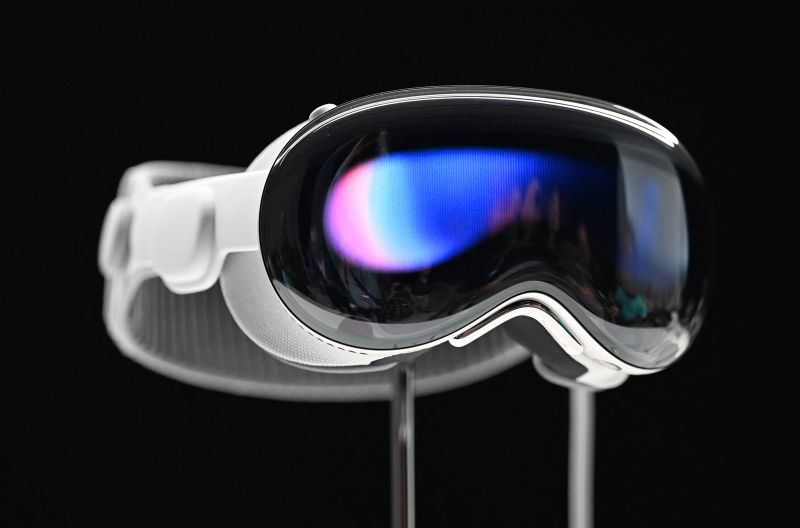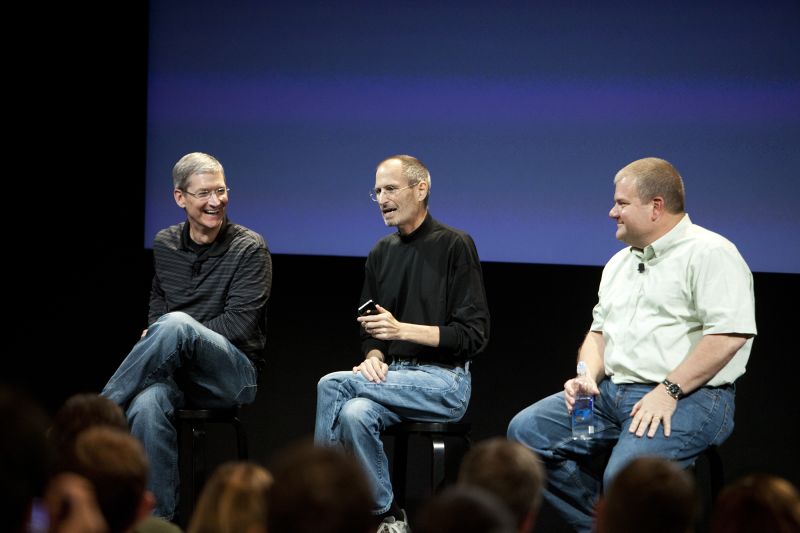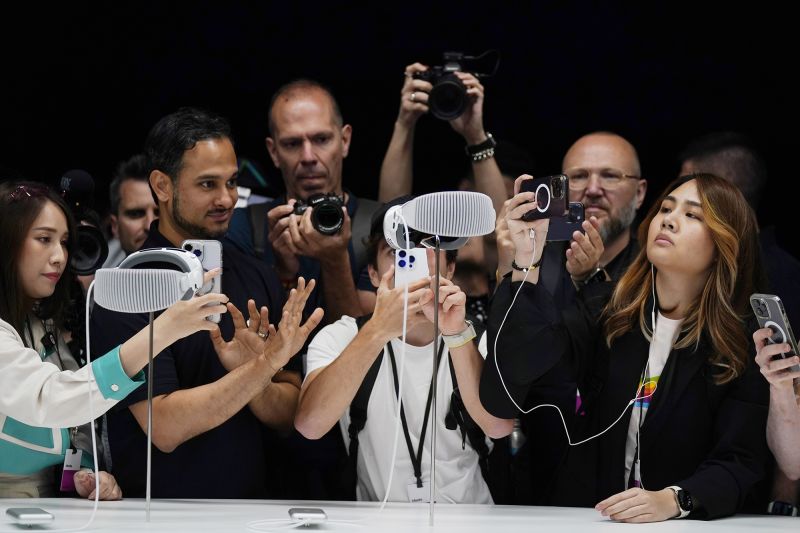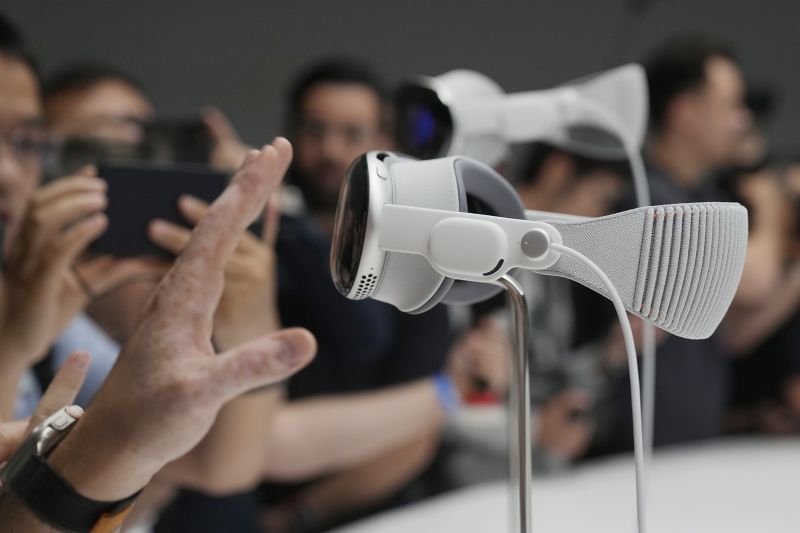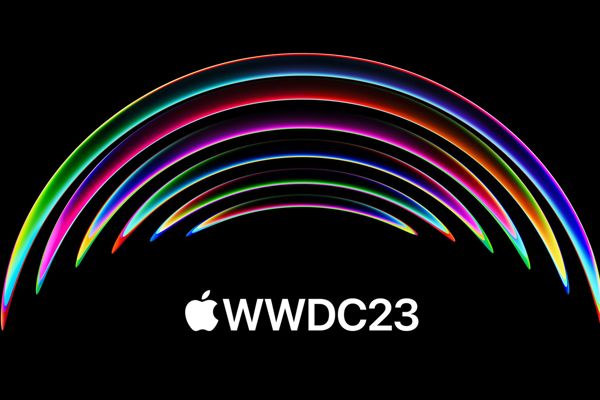
During the unveiling of the Vision Pro mixed reality headset at Apple's headquarters in June, CEO Tim Cook posed for photographs as he showcased the company's latest product. The Vision Pro was mostly kept on display, with only a few private briefings providing a preview of the work-in-progress. It has been reported that the Vision Pro is still undergoing design changes to improve its weight and comfort before its official launch next year.
Apple's upcoming launch of the Vision Pro is set to be its riskiest in years. CEO Tim Cook has been a vocal advocate of the potential for augmented reality to revolutionize communication and collaboration, and now he must demonstrate that a device combining virtual and augmented reality is the future of computing. However, the $3,499 price tag and bulky design make it a tough sell. Additionally, this marks Cook's first major hardware product launch in 7 years and only the third during his time as CEO following the passing of Apple co-founder Steve Jobs.
Apple's new Vision Pro virtual reality headset is displayed during Apple's Worldwide Developers Conference (WWDC) at the Apple Park campus in Cupertino, California, on June 5.
The Vision Pro headset is being released at a time when the extended reality (XR) market, which includes augmented, virtual, and mixed reality, has reached a plateau with minimal adoption among mainstream consumers. Additionally, the headset will have limited apps and experiences available initially and will be connected to a battery pack similar in size to an iPhone.
Jeremy Bailenson, the original director of Stanford University's Virtual Human Interaction Lab, predicts that companies such as Apple are banking on consumers eventually embracing virtual headsets for a wide range of uses. He cautioned, "Let's utilize the technology, but only when it proves its worth. Relying on VR to replace smartphones is a risky move."
Despite the company's $3 trillion valuation and substantial cash reserves, CEO Tim Cook has a lot on the line. In the fast-paced tech industry, companies often fail to maintain their position as new and innovative technologies emerge, eventually overshadowing the current leaders. (Remember HP, IBM, Cisco ... and what Apple did to Microsoft).
iPhone sales are no longer experiencing a surge, and eventually, Cook & Co. will need a replacement. However, skeptics are unsure if Vision Pro is the answer: The device is entering an uncertain market and facing design complexities and high costs.
Despite these concerns, the potential for Vision Pro is enormous. Nearly every new Apple product offers the promise of changing how we live with screens of varying sizes. The Vision Pro has the potential to do this in a even more significant way, and it could generate new interest in the market similar to how the iPod revolutionized music players or the iPhone did for smartphones.
It could also end up being the product that defines Cooks legacy.
Risk is in Apples DNA
If Tim Cook were to retire today, he would be remembered as one of the most successful CEOs of the decade. During his leadership, Apple's market cap has grown by 700%, and its iPhone business remains strong. He has also built a robust services business that includes music, TV, and gaming products, bringing in revenue that is not tied to hardware sales. Additionally, he introduced the highly successful Apple Watch and AirPods.
Cook is recognized for his operational expertise rather than being a product visionary. However, in the 12 years since co-founder Steve Jobs' passing, he has taken significant product risks. Despite his successes, there have been major missteps under his tenure, including the disastrous introduction of Apple Maps, "Batterygate," allegations of poor labor conditions at its suppliers' factories, and criticism for giving too much deference to the government of China, one of its most important and fastest-growing markets.
But now Cook wants to add to his legacy the one thing he hasnt done yet that Jobs did routinely: launch a truly breakthrough hardware product.
Apple CEO Steve Jobs discusses the iPhone4 at Apple headquarters in Cupertino on Friday, July 16, 2010, accompanied by Apple Chief Operating Officer Tim Cook and senior vice president of Mac Hardware Engineering Bob Mansfield.
Tim Bajarin, a veteran Apple analyst and president of consumer tech research firm Creative Strategies, recognizes that taking risks has always been a fundamental part of the company's ethos. For instance, Jobs revolutionized the appearance of personal computers with the colorful iMacs in 1999, and later with the iPod and iPhone. During that period, Cook was Steve's key collaborator in bringing these visions to life," Bajarin told CNN. "I believe it ingrained in him the understanding that innovation is necessary to break new ground."
Apple has shifted its focus in recent years, prioritizing perfection over speed in the development of new products. During the company's 2017 Worldwide Developer Conference, they introduced ARKit, a framework that allows developers to incorporate augmented reality into their apps. The demonstration showcased various possibilities, including trying out furniture in a home before purchasing and utilizing AR for video games, education, and sports applications in the future. The Vision Pro appears to have a stronger start compared to previous products like the iPod or iPhone, as it has an established iTunes Store and App Store from day one.
Bajarin stated that there are already hundreds of thousands of developers who can develop for the Vision Pro right from the start as they come out the door.
However, the technology and the demand for it remain unproven. While Apple has been developing Vision Pro for years, other companies' headsets have seen limited uptake, according to Eric Abbruzzese, a director at ABI Research. For example, Metas Quest 2 is the most successful headset by a significant margin, with about 20 million units shipped in its lifetime. This is in comparison to the iPad line, which has averaged between 10 million and 15 million shipments each quarter for years, similar to the Apple Watch.
The Apple touch
Abbruzzese stated that Vision Pro can be likened to the initial iPhone launch, where competition was present, and Apple understood that the first version would not be an immediate hit. The focus was on continuous improvement over time and making the device more accessible. While Vision Pro may not sell millions of units, it has the potential to establish the product category (mixed reality headsets) in the market.
Although Cook has been an advocate of virtual and augmented reality for years, stating "we are high on AR in the long run" on a 2016 earnings call, he has also voiced criticisms of its execution. Describing virtual reality as "really cool," Cook stated last year that it is better for specific periods of time and "not a way to communicate well." Apple's approach with the Vision Pro aims instead to enable users to communicate and be productive while experiencing immersive worlds.
A crowd gathers around the Apple Vision Pro headset as it is displayed in a showroom on the Apple campus in Cupertino on June 5.
Jeff Chiu/AP
Vision Pro has received praise from many people, including this reporter, who found it easy to imagine using the headset for watching movies and TV. The headset is expected to offer experiences tailored for Hollywood filmmakers, thanks to Apple's close relationships in the entertainment industry. Former Apple board member and Disney CEO Bob Iger has been involved, and at an event he announced that Disney+ will be available on the headset at launch. NBA Commissioner Adam Silver has also mentioned working with Apple to bring a tech-enhanced viewing experience to the Vision Pro.
However, it was more difficult to envision using the headset for activities such as viewing photos, texting, or browsing Safari. Stanford University's Virtual Human Interaction Lab founding director, Bailenson, believes that virtual headsets are only suitable for specific experiences and for short periods, around 30 minutes at a time. This is due to how virtual displays differ from the real world, causing fatigue to the human perceptual system.
"After conducting numerous studies, we have discovered that VR is most effective when used for experiences that would be too dangerous, impossible, counterproductive, or expensive in the real world," stated Bailenson.
This includes activities such as training firefighters, helping stroke victims with rehabilitation, or practicing challenging workplace conversations. However, it is not as effective for tasks like checking email, watching movies, or general office work."
The issue also involves user comfort and aesthetics, regardless of how well-designed a headset may be. For example, Oculus founder Palmer Lucky became a meme after wearing a headset on the cover of Time magazine. Similarly, a photo of Meta CEO Mark Zuckerberg walking next to a group of people wearing headsets at a tech event drew ridicule for being "dystopian" and "creepy." As former Apple App Store executive Phillip Shoemaker tweeted after the Vision Pro announcement, "Nobody looks good wearing a headset. We all look like big nerds."
Some also felt that the timing of Apple's headset pitch was off. Earlier in the pandemic, more people might have been interested in creating virtual experiences as we spent most of our time working and socializing from home. Now, with more employees back in the office and companies looking to cut costs due to broader economic uncertainty, the justification for the expensive device seems less clear.
The Apple Vision Pro headset is displayed in a showroom on the Apple campus at the company's annual developers conference on June 5.
Jeff Chiu/AP
However, Abbruzzese contends that the timing could be just right, considering the years spent on hiring, research and development, as well as related acquisitions, all of which he sees as a "boon" for the company. Despite having a loyal following and an impressive track record in hardware, convincing developers, early adopters, and certain enterprise customers to invest in the device may still pose a challenge.
"If Vision Pro succeeds in defining the mixed reality space, it would be akin to the launch of the iPhone in some respects - not an immediate victory, but a multi-year strategy that revolutionized phones," he explained.
On the other hand, if it fails to meet expectations, it could be presented as an innovative concept that the market wasn't prepared for, he added. "There might be a couple of tough quarters with shareholders expressing their disappointment, but the company has numerous other successes in its portfolio that will overshadow this setback."
But Cook would still be without his defining product.
